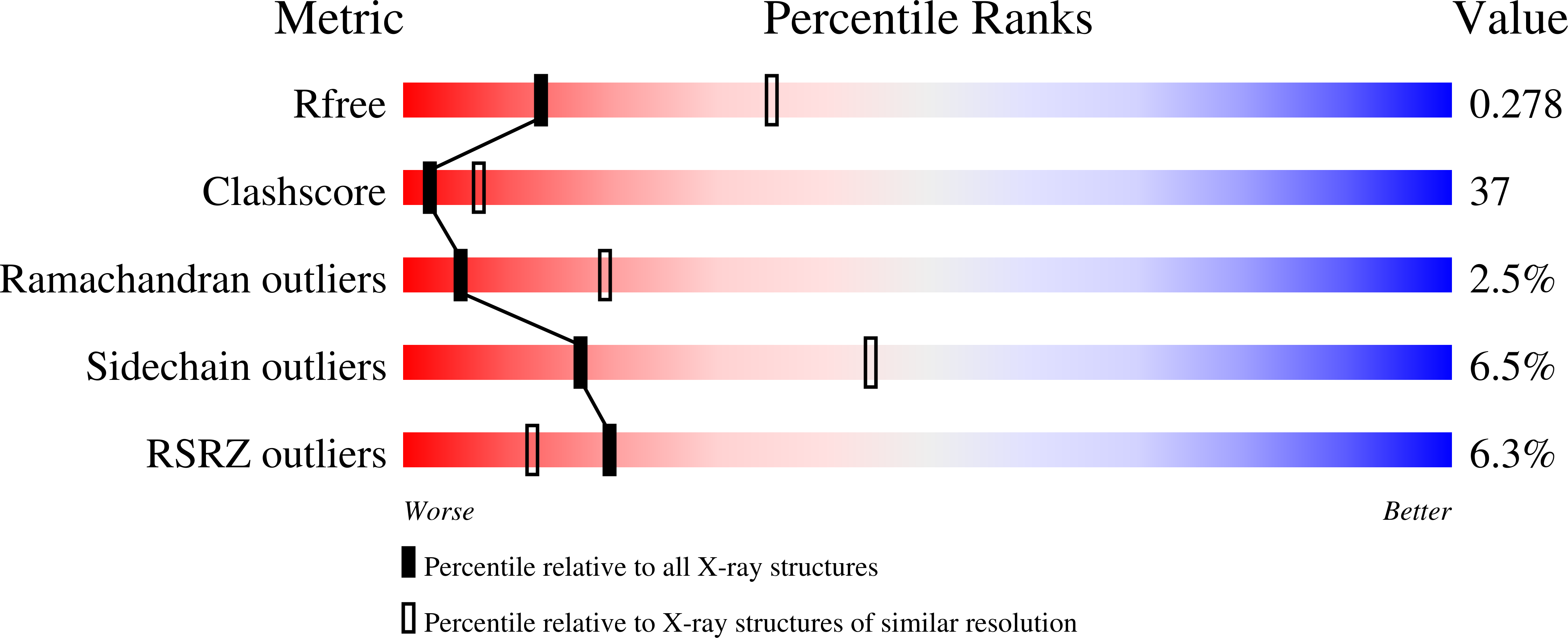Identification of key phosphorylation sites in the circadian clock protein KaiC by crystallographic and mutagenetic analyses
Xu, Y., Mori, T., Pattanayek, R., Pattanayek, S., Egli, M., Johnson, C.H.(2004) Proc Natl Acad Sci U S A 101: 13933-13938
- PubMed: 15347809
- DOI: https://doi.org/10.1073/pnas.0404768101
- Primary Citation of Related Structures:
1U9I - PubMed Abstract:
In cyanobacteria, KaiC is an essential hexameric clock protein that forms the core of a circadian protein complex. KaiC can be phosphorylated, and the ratio of phospho-KaiC to non-phospho-KaiC is correlated with circadian period. Structural analyses of KaiC crystals identify three potential phosphorylation sites within a 10-A radius of the ATP binding regions that are at the T432, S431, and T426 residues in the KaiCII domains. When these residues are mutated by alanine substitution singly or in combination, KaiC phosphorylation is altered, and circadian rhythmicity is abolished. These alanine substitutions do not prevent KaiC from hexamerizing. Intriguingly, the ability of KaiC overexpression to repress its own promoter is also not prevented by alanine substitutions at these sites, implying that the capability of KaiC to repress its promoter is not sufficient to allow the clockwork to oscillate. The KaiC structure and the mutational analysis suggest that S431 and T426 may share a phosphate that can shuttle between these two residues. Because the phosphorylation status of KaiC oscillates over the daily cycle, and KaiC phosphorylation is essential for clock function as shown here, daily modulations of KaiC activity by phosphorylation at T432 and S431/T426 seem to be key components of the circadian clockwork in cyanobacteria.
Organizational Affiliation:
Department of Biological Sciences, Vanderbilt University, Nashville, TN 37235, USA.



















